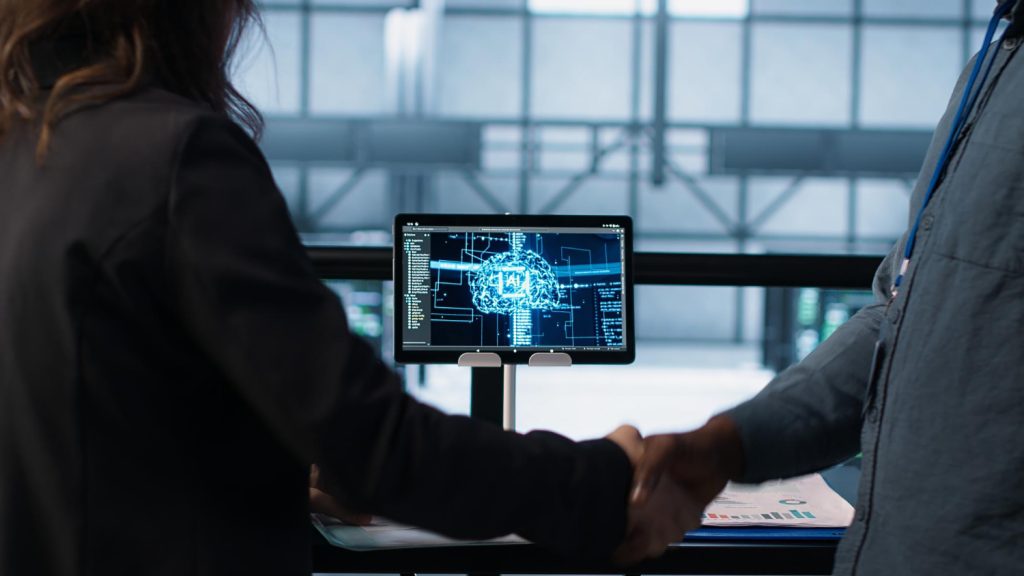
As AI technology evolves at an unprecedented pace, it raises critical questions about how intellectual property (IP) laws apply. The intersection of AI and IP brings complex challenges, including protecting the rights of creators and innovators, ensuring established laws remain effective, and shaping the future of creativity and innovation.
If you’re interested in IP, this piece explores a crucial yet often-overlooked aspect of its evolution—the role of intellectual property.
At the heart of any discussion on AI and IP is the need to safeguard the rights of inventors and creators. The IP system exists to incentivize innovation by granting exclusive rights to those who develop new ideas, products, and technologies. AI should not undermine this foundation by disregarding human contributions.
Many AI models rely on vast datasets that include copyrighted materials and patented innovations, which raises concerns about fair use and ownership. As AI continues to evolve, policies must ensure that human creators’ rights are protected while still allowing for technological advancement. Striking this balance is essential for fostering both creativity and progress.
There is no evidence that AI’s rapid development justifies weakening long-standing IP protections. Patent, trademark, trade secret, and copyright laws have provided a strong framework for encouraging innovation. These laws have stood the test of time, and AI should not be an excuse to erode them.
Instead of dismantling these protections, policymakers should take a thoughtful approach that integrates AI while maintaining legal stability. Government agencies like the U.S. Copyright Office (USCO) and the U.S. Patent and Trademark Office (USPTO) should provide additional guidance to help navigate AI’s impact on IP.
AI models often use copyrighted works as training data, sparking debates about fair use. Courts must clarify that using copyrighted material for AI training does not automatically qualify as fair use.
Under Section 107 of the U.S. Copyright Act of 1976, fair use is determined by four factors:
1. Purpose and character of the use
2. Nature of the copyrighted work
3. Amount and substantiality of the portion used
4. Effect on the market for the original work
If AI-generated content directly competes with an original work and harms its market value, this weighs against fair use. Because fair use is evaluated on a case-by-case basis, clearer guidelines from the USCO and USPTO can help protect creators while allowing AI innovation to thrive.
As AI becomes more integrated into research and development, clear rules about inventorship—who qualifies as an inventor—are essential. If uncertainty over AI-assisted inventions persists, it could hinder innovation.
The USPTO has taken a positive step by maintaining the current inventorship standards. A natural person must significantly contribute to an AI-assisted invention for it to be patentable. The agency has clarified that an inventor doesn’t need to contribute to every claim in a patent, but every claim must have at least one human contributor.
This approach ensures that AI remains a tool for innovation rather than being recognized as an inventor itself. It aligns with existing legal frameworks and provides consistency and predictability in the patent system.
Patent eligibility—whether an invention qualifies for a patent—remains an area of uncertainty. Some stakeholders argue that terms like “abstract idea” and “natural phenomenon” in USPTO guidelines lack clear definitions, leading to inconsistent rulings.
With AI introducing new challenges, the USPTO should refine its guidance by providing specific examples of AI innovations that qualify for patents. Seeking further input from stakeholders could also help create clearer, more predictable policies.
Clear disclosure requirements are necessary, but they should differ for patents and copyrights.
Patents: No additional AI-related disclosures are needed. Existing rules already require honesty in inventorship, and improper inventorship can lead to rejection.
Copyrights: Since copyright law lacks a formal “duty of candor,” AI developers should be transparent about what copyrighted materials their systems ingest. Keeping records of training data could help resolve fair use disputes while ensuring respect for copyright owners’ rights.
The Importance of Licensing in AI Development
For AI companies to operate ethically, they must obtain proper licenses for the copyrighted works they use. Licensing creates a fair system where creators are compensated for their contributions while allowing AI development to continue.
Flexible licensing models—such as revenue-sharing agreements or credits for original creators—can benefit both AI developers and content creators. Establishing these agreements fosters collaboration and ensures a sustainable relationship between AI and the creative industries.
As AI-generated content becomes more common, developers must implement safeguards to prevent infringement. AI systems should be designed with built-in mechanisms to identify and reduce the risk of producing content that violates copyright laws.
Companies have a responsibility to ensure their AI models do not generate unauthorized copies of existing works. Investing in monitoring tools can demonstrate a commitment to ethical innovation and compliance with IP laws.
As AI continues to shape industries, policy discussions must prioritize protecting creators while maintaining the integrity of the IP system. By upholding existing laws, clarifying fair use, encouraging licensing, and preventing infringement, we can create a balanced framework where AI and human creativity coexist.
The future of AI should enhance innovation—not replace or undermine human contributions. A well-structured policy approach ensures that progress benefits everyone while respecting the rights of those who drive innovation forward.